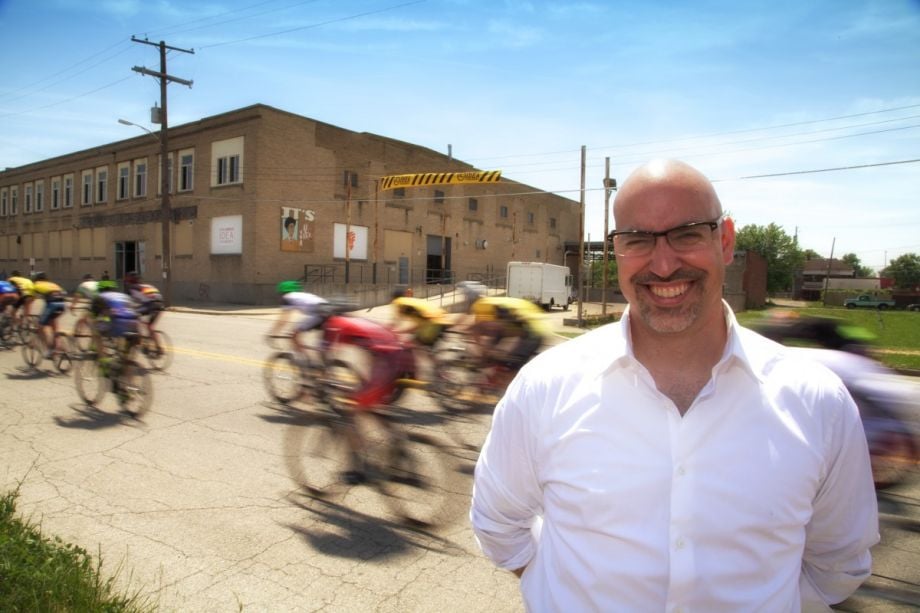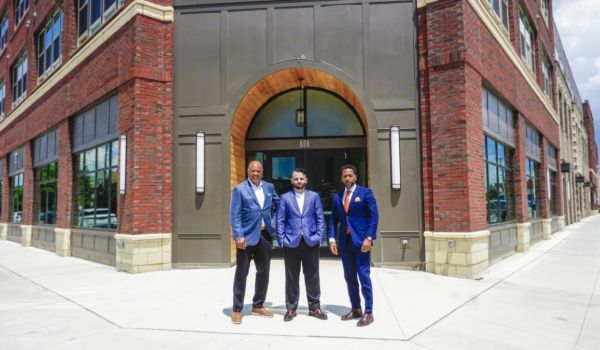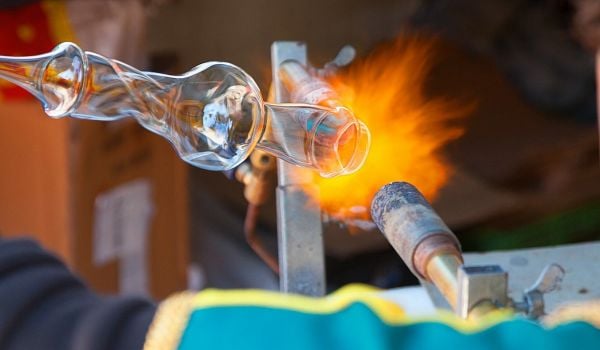In “4 Cities Join to Bring Diversity to the Innovation Economy,” I wrote about an initiative by the Pratt Center for Community Development to encourage equitable development in the growth of urban manufacturing and the maker movement. Bright spots in urban manufacturing’s comeback continue to pop up across the country. In Ohio, the Columbus Idea Foundry is having such a positive impact, the mayor of Columbus shouted its praises in a “State of the City” speech.
The Foundry isn’t just any makerspace. Occupying 65,000 square feet of a 100-year-old former shoe factory, it’s quite possibly the largest community makerspace in the world, according to TechCrunch. Founder Alex Bandar worked six years to get there.
In 2008, Bandar had a day job as a computational metallurgist. That means he was writing computer programs about the physics of metals in a stereotypical office setting. But after a failed demonstration that he gave as an invited speaker in one of his sister’s metalsmithing classes, he became fascinated by the more hands-on DIY community blossoming around traditional trades like craftmaking and product development.
“Not only did I discover that I could not teach anything practical, but [my sister’s classmates] were all better welders, machinists and blacksmiths than I was,” says Bandar. “I was delighted to discover the maker movement.”
When Bandar started dreaming up his own makerspace, he initially wanted it to service high-school and college students as a learning laboratory. But that concept proved to be cost prohibitive and perhaps ahead of its time.
“But the small business and creative communities in central Ohio raised their hands and said, ‘We’d like to be a part of this. We need a place to prototype our parts, to micro-manufacture things, to hang out and share tips and tricks with other entrepreneurial people,’” Bandar says, “so I pivoted a bit and positioned our mission to fit the adult creative and entrepreneurs, and that was when we really took off.”
Keeping his day job at first, he launched a member-driven (though he was paying most of the bills) community space in a small garage. Then he and friends rented a bigger garage.
In 2011, Columbus Mayor Michael Coleman made the revitalization of the neighborhood of Franklinton (nicknamed “The Bottoms”) one of his administration’s priorities. When the Columbus Idea Foundry was looking to graduate to a larger space in 2013, local entities, such as the Franklinton Development Association, helped to facilitate the lease-to-own deal that brought the foundry to its current space, which opened in June. The project also received a $350,000 grant from ArtPlace America and $84,000 from the Columbus Foundation.
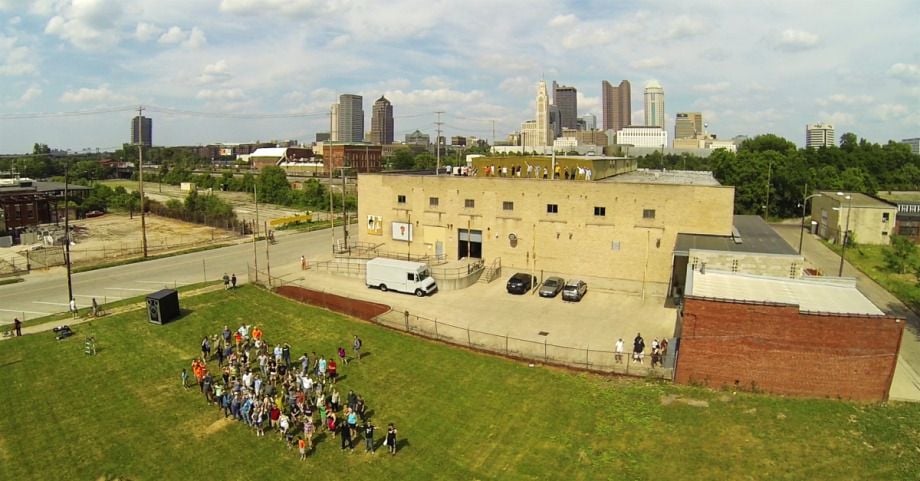
Columbus Idea Foundry (Photo shot by drone by Infinite Impact)
Just five months later, the effect of the collective on the community is already obvious.
“We’ve had a couple of businesses start here by having people meet, become friends, and then become business partners,” says Bandar. “One of the companies, Knockout Concepts, grew too large for our space. They now have half a dozen employees and seed funding, but they still wanted to be near us, so they started renting office space in what had been an unrentable building about two blocks from here.” Other businesses sprouting up in the area include a brewery and a community glass-blowing facility.
With gentrification on the brain (as always), I asked Bandar about outreach to Franklinton’s longtime residents.
Bandar says high-school and college students qualify for significant discounts for memberships, and the Foundry has connections to a local food and social services facility called the Gladden Community House.
Bandar admits they could be doing more to be inclusive, but the Columbus Idea Foundry’s has been an economic driver — something other large, non-coastal cities could learn from. “On the coasts, there’s such a density of startups that of course you have to pat yourself on the back and raise a megaphone to get noticed,” says Bandar. “Here there isn’t that culture of self-marketing. That’s why Mayor Coleman is encouraging Columbus to, in his words, ‘Walk with swagger.’”
Another reason the Foundry can pat itself on the back: “We have helped to raise, directly or indirectly, about half a million dollars for half a dozen companies in central Ohio that have had good ideas, ran Kickstarter or Indiegogo campaigns, and made their companies real.”
The Equity Factor is made possible with the support of the Surdna Foundation.
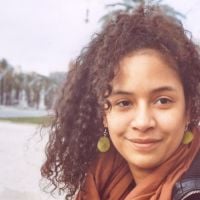
Alexis Stephens was Next City’s 2014-2015 equitable cities fellow. She’s written about housing, pop culture, global music subcultures, and more for publications like Shelterforce, Rolling Stone, SPIN, and MTV Iggy. She has a B.A. in urban studies from Barnard College and an M.S. in historic preservation from the University of Pennsylvania.


